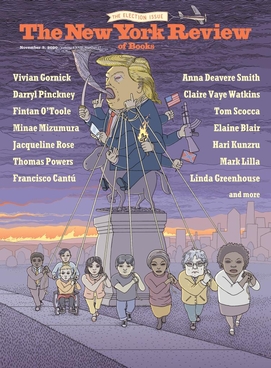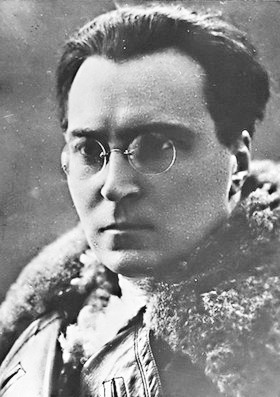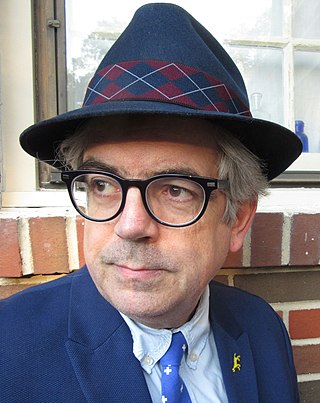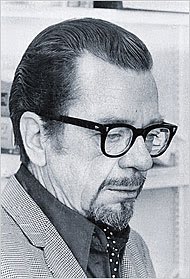
Pierre-Félix Guattari was a French psychoanalyst, political philosopher, semiotician, social activist, and screenwriter. He co-founded schizoanalysis with Gilles Deleuze, and ecosophy with Arne Næss, and is best known for his literary and philosophical collaborations with Deleuze, most notably Anti-Oedipus (1972) and A Thousand Plateaus (1980), the two volumes of their theoretical work Capitalism and Schizophrenia.

Kathy Acker was an American experimental novelist, playwright, essayist, and postmodernist writer, known for her idiosyncratic and transgressive writing that dealt with themes such as childhood trauma, sexuality and rebellion. Her writing incorporates pastiche and the cut-up technique, involving cutting-up and scrambling passages and sentences; she also defined her writing as existing in the post-nouveau roman European tradition. In her texts, she combines biographical elements, power, sex and violence.

Andrew Phillip Cunanan was an American spree killer who murdered five people over three months from April 27 to July 15, 1997. His victims include Italian fashion designer Gianni Versace and Chicago real estate developer Lee Miglin. Cunanan died by suicide on July 23, 1997, eight days after murdering Versace.

The New York Review of Books is a semi-monthly magazine with articles on literature, culture, economics, science and current affairs. Published in New York City, it is inspired by the idea that the discussion of important books is an indispensable literary activity. Esquire called it "the premier literary-intellectual magazine in the English language." In 1970, writer Tom Wolfe described it as "the chief theoretical organ of Radical Chic".
Paul Virilio was a French cultural theorist, urbanist, architect and aesthetic philosopher. He is best known for his writings about technology as it has developed in relation to speed and power, with diverse references to architecture, the arts, the city and the military. Virilio was a prolific creator of neologisms, most notably his concept of "Dromology", the all-around, pervasive inscription of speed in every aspect of life.

Victor Serge, born Victor Lvovich Kibalchich, was a Russian writer, poet, Marxist revolutionary and historian. Originally an anarchist, he joined the Bolsheviks five months after arriving in Petrograd in January 1919 and later worked for the Comintern as a journalist, editor and translator. He was critical of the Stalinist regime and remained a revolutionary Marxist until his death. He was a close supporter of the Left Opposition and associate of Leon Trotsky.According to, William Giraldi, Serge's novels may be "read like an alloy of" George Orwell and Franz Kafka: "the uncommon political acuity of Orwell and the absurdist comedy of Kafka, a comedy with the damning squint of satire, except the satire is real." In his studies of Serge, Richard Greeman described him as a Modernist writer influenced by James Joyce, Andrei Bely and Freud; Greenman also believed that Serge, although writing in French, continued the experiments of such Russian Soviet writers as Isaac Babel, Osip Mandelstam and Boris Pilnyak and poets Vladimir Mayakovsky and Sergei Yesenin. He is remembered as the author of novels and other prose works, memoirs and poetry. Among his novels chronicling the lives of Soviet people and revolutionaries and of the first half of the 20th century, the best-known is The Case of Comrade Tulayev. Nicholas Lezard calls the novel " of the great 20th-century Russian novels" that follows the traditions of "Gogolian absurdity".

Michael Martone is an American author. Since 1977, he has written nearly 30 books and chapbooks. He was a professor at the Program in Creative Writing at the University of Alabama, where he taught from 1996 until his retirement in 2020.

Ian Buruma is a Dutch writer and editor who lives and works in the United States. In 2017, he became editor of The New York Review of Books, but left the position in September 2018.
Jean-Patrick Manchette was a French crime novelist credited with reinventing and reinvigorating the genre. He wrote ten short novels in the seventies and early eighties, and is widely recognized as the foremost French crime fiction author of that period. His stories are violent explorations of the human condition and French society. Manchette was politically to the left and his writing reflects this through his analysis of social positions and culture.
Dodie Bellamy is an American novelist, nonfiction author, journalist, educator and editor. Her book, Cunt-Ups (2001) won the 2002 Firecracker Alternative Book Award. Her work is frequently associated with that of the New Narrative movement in San Francisco and fellow writers Robert Glück, Dennis Cooper, Kathy Acker, Kevin Killian, and Eileen Myles.

Chris Kraus is a writer and critic. Her work includes the novels I Love Dick, Aliens and Anorexia, and Torpor, which form a loose trilogy that navigates between autobiography, fiction, philosophy, and art criticism, and a sequence of novels dealing with American underclass experience that began with Summer of Hate. Her approach to writing has been described as ‘performance art within the medium of writing’ and ‘a bright map of presence’. Her work has drawn controversy through its equalisation of high and low culture, mixing critical theory with colloquial language and graphic representations of sex. Her books often blend intellectual, political, and sexual concerns with wit, oscillating between esoteric referencing and parody. She has written extensively in the fields of art and cultural criticism.

John Edward Williams was an American author, editor and professor. He was best known for his novels Butcher's Crossing (1960), Stoner (1965), and Augustus (1972), which won a U.S. National Book Award.

Roxana Robinson is an American novelist and biographer whose fiction explores the complexity of familial bonds and fault lines. She is best known for her 2008 novel, Cost, which was named one of the Five Best Novels of the Year by The Washington Post. She is also the author of Georgia O'Keeffe: A Life, and has written widely on American art and issues pertaining to ecology and the environment.
Semiotext(e) is an independent publisher of critical theory, fiction, philosophy, art criticism, activist texts and non-fiction.
Stephen O. Murray was an American anthropologist, sociologist, and independent scholar based in San Francisco, California. He was known for extensive scholarly work on the sociology, anthropology, and comparative history of sexual and gender minorities, on sociolinguistics, history of the social sciences, and as an important editor and organizer of scholarly work in these areas.

Charles Ruas is an American writer, translator, literary and art critic, and interviewer for print and broadcast. He is well known for his work with artists, musicians, and writers of the 1970s, when he was Director of Arts Programming at WBAI Radio, New York. He was a literary and art critic for the Soho Weekly News, ArtNews, and Art in America, among other publications. He is the author of the interview collection Conversations with American Writers (1985) and the editor and translator of numerous literary works. A specialist in French, English, and Comparative Literature, he has taught at Columbia University, New York University, University of Grenoble, France, and Nankai University in China. He lives and works in New York City.
glbtq.com was an online encyclopedia of gay, lesbian, bisexual, transgender, and queer (GLBTQ) culture. Launched in 2003, it was edited by Claude J. Summers, emeritus professor at the University of Michigan–Dearborn, and published by Andrew "Wik" Wikholm. It was warmly received by critics, who praised its columns as well-researched. The encyclopedia closed in 2015; its content is accessible via an online archive.
New York Review Books (NYRB) is the publishing division of The New York Review of Books. Its imprints are New York Review Books Classics, New York Review Books Collections, The New York Review Children's Collection, New York Review Comics, New York Review Books Poets, and NYRB Lit.

Sylvère Lotringer was a French-born literary critic and cultural theorist. Initially based in New York City, he later lived in Los Angeles and Baja California, Mexico. He is best known for synthesizing French theory with American literary, cultural and architectural avant-garde movements as founder of the journal Semiotext(e) and for his interpretations of theory in a 21st-century context. He is regarded as an influential interpreter of Jean Baudrillard's theories, among others.
Boris Dralyuk is a Ukrainian-American writer, editor and translator. He obtained his high school degree from Fairfax High School and his PhD in Slavic Languages and Literatures from UCLA. He teaches in the English Department at the University of Tulsa. He has taught Russian literature at his alma mater and at the University of St Andrews, Scotland. From 2016 to 2022, he was executive editor and editor-in-chief of the Los Angeles Review of Books and he is the managing editor of Cardinal Points.












